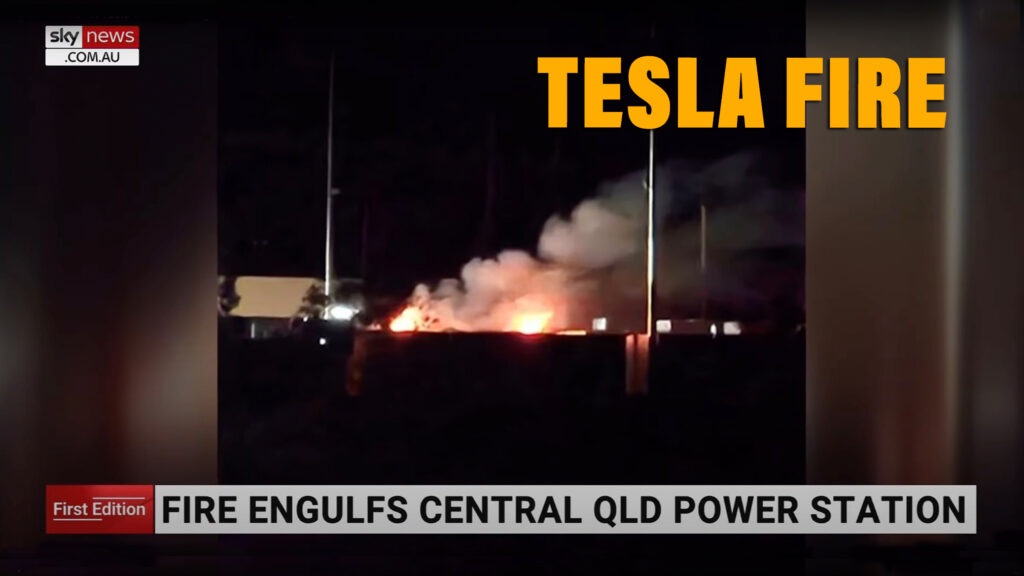Tesla fires are nothing new – we wrote about one just five days ago. But this latest one is more serious than most because it involves not a Model 3 but a Tesla lithium battery storage site. And emergency crews warn that it could burn for several days, having reportedly been told by Tesla not to try to fully extinguish the blaze.
The fire broke out at the $38 million ($60m AUD) Tesla facility near Rockhampton in Queensland, Australia, before 8 pm local time on Tuesday night. For still unknown reasons, one of 40 Tesla Megapack 2.0 units at the Bouldercombe Battery Project owned and operated by energy provider Genex Power caught alight, sending loud bangs and flames into the night air, together with pungent smoke that locals describe as smelling like burning plastic.
Emergency teams responding to the accident managed to contain the fire to a single Megapack and told residents to stay indoors with their windows closed, but said the smoke poses no threat to public health. The Bouldercombe Battery Project is one of the first stand-alone large-scale battery energy storage systems in Queensland, and only went live in July of this year, Australia’s ABC News reports.
Related: Sacramento Fire Dept Calls Out Elon Musk After Tesla Spontaneously Catches Fire In Salvage Yard
Genex confirmed to reporters that the site had been disconnected from the grid until the fire had been extinguished and the facility declared safe, but that might take a while because Tesla has advised the Queensland Fire and Emergency Services not to attempt to put the fire out.
“On advice from the Queensland fire brigade and protocols provided by Tesla, the battery fire is being allowed to burn out under the supervision of the fire brigade,” a Genex spokesperson told media.
Queensland Senator Matt Canavan took to social media to air his feelings about the incident, slamming the Bouldercombe Battery Project.
“A Tesla battery is on fire near Rockhampton and crews have been told not to put it out,” he wrote on Facebook “Our new energy grid is worse than our old energy grid.”








